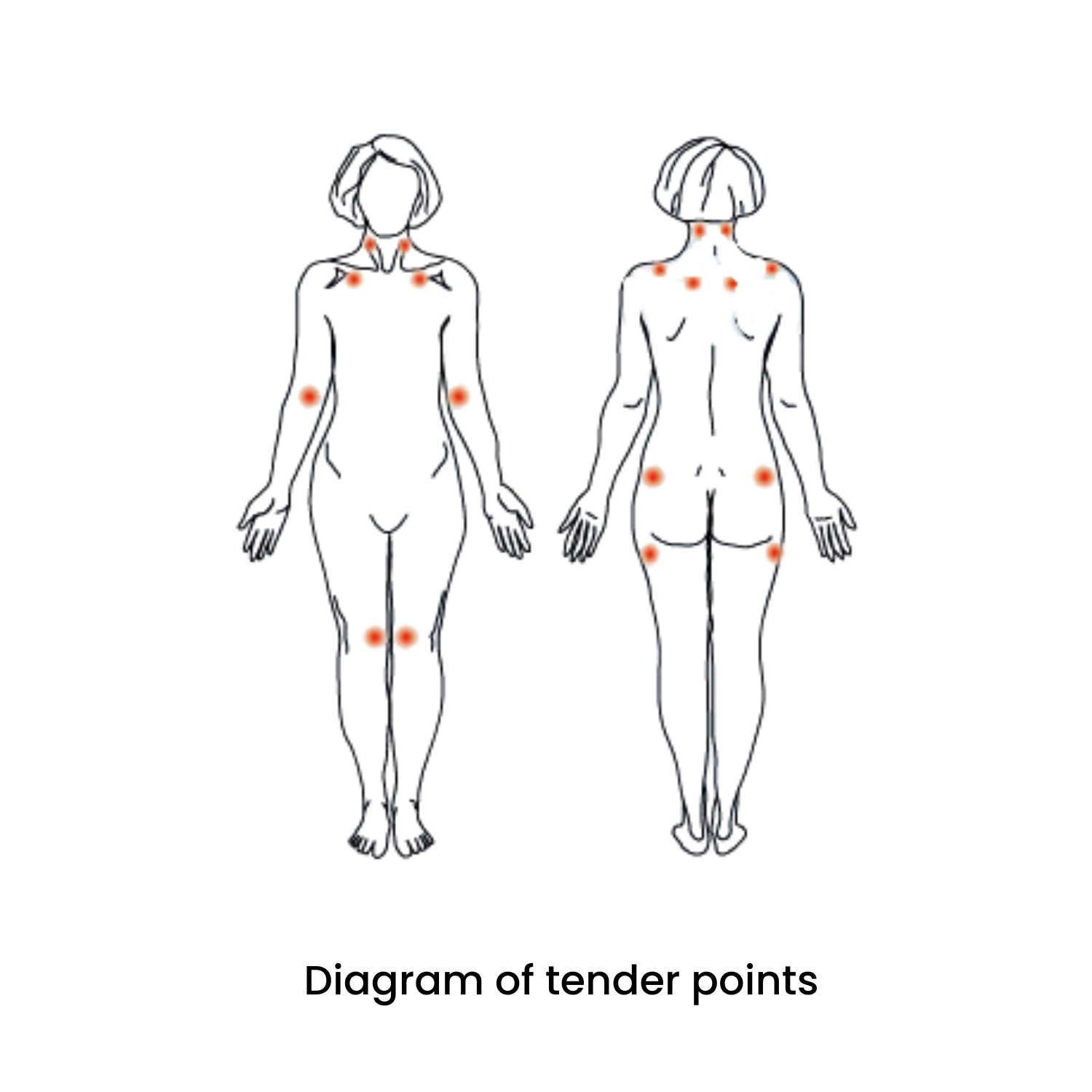Fibromyalgia is a common chronic pain disorder that affects people of all ages, including children. The prevalence of fibromyalgia varies depending on the population being studied, but it is estimated that 2-4% of the general population worldwide are living with fibromyalgia.
The condition is more common in women than in men, with women being affected at a rate of about 7-9 times that of men. The condition can occur at any age, but it is most commonly diagnosed between the ages of 20 and 50.

Living with fibromyalgia often means living with chronic widespread musculoskeletal pain and fatigue. The condition can also cause sleep problems, headaches, irritable bowel syndrome, and mood issues. The exact causes of fibromyalgia remain unknown, but treatment can help manage the symptoms.
The Silent Disorder
Often referred to as a “silent disorder”, fibromyalgia is a chronic condition that can cause debilitating, widespread pain and emotional and mental distress. Although symptoms are not outwardly visible to others, they are very real and can significantly impact a person’s daily life. Most will never know a person with this condition is suffering, unless it is communicated to them. This can make it challenging for people living with fibromyalgia to get the support and understanding they need from loved ones and healthcare providers.

Another reason fibromyalgia is known as a silent disorder is that there are no diagnostic tests or imaging studies that can definitively diagnose the condition. The diagnosis of fibromyalgia is based on the presence of certain symptoms and the exclusion of other conditions. This often compounds the difficulty for people living with fibromyalgia to get a diagnosis and proper treatment.
It is important to note that a diagnosis does not have to be life-altering. With proper treatment and self-care, it is possible to live a full and productive life with fibromyalgia. In the process of change and acceptance, do not forget to enjoy your life! The best thing about life is life itself. Take time to understand your options, adopt positive lifestyle changes, and be patient with yourself. A life with less pain is surely within reach.

Fibromyalgia: Diagnosis and Treatment
Typically, a healthcare provider diagnoses fibromyalgia based on the presence of certain symptoms. A person must have widespread pain that has persisted for at least 3 months to receive such diagnosis. They must also have tender points in at least 11 of the 18 designated tender point sites. Tender points are areas on the body that are tender to touch and can be helpful in an accurate diagnosis.

A healthcare provider, in addition to the presence of widespread pain and tender points, will consider a person’s medical history, symptoms, and physical exam findings when making a diagnosis.
At this time there is no cure for fibromyalgia, but treatment can help manage the symptoms. Treatment for fibromyalgia often includes a combination of medications, self-care strategies, positive lifestyle changes, and other therapies.
The National Fibromyalgia Association (NFA) promotes plenty traditional and alternative treatments stating, “Alternative treatments, nutrition, relaxation techniques, and exercise play an important role in fibromyalgia treatment as well. Each patient should, with the input of a healthcare practitioner, establish a multifaceted and individualized approach that works for them.”

Chronic Pain Management Options for Fibromyalgia
There are a number of chronic pain management options and lifestyle habits that can be helpful to people living with fibromyalgia. These options may include:
Medications:
Pain relievers, such as acetaminophen and nonsteroidal anti-inflammatory drugs (NSAIDs), can be helpful in managing fibromyalgia pain. Other medications include antidepressants, which can help improve sleep and reduce pain, anti-seizure drugs, which can help reduce nerve pain. However, it’s important to note that medications may not be the proper approach for every individual. As proponents of natural care strategies, limiting chemical exposure that could further exacerbate symptoms (such as disturbing gut flora), is ideal.
Self-care strategies:
Simple strategies, such as getting enough sleep, exercising regularly, and eating healthy can be helpful in managing fibromyalgia pain.
Physical therapy:
Physical therapy can help improve flexibility, strength, and endurance, which reduce pain and improve function in people with fibromyalgia.
Occupational therapy:
Occupational therapy can help fibromyalgia sufferers learn techniques to manage their daily activities and reduce pain.
Cognitive behavioral therapy:
Cognitive behavioral therapy (CBT) is a type of talk therapy that can help people living with fibromyalgia learn to manage their pain and improve their quality of life.
Complementary and alternative therapies:
Complementary and alternative therapies, such as acupuncture, chiropractic care, and massage, may be very helpful in managing fibromyalgia pain.
Lifestyle changes:
In addition to the self-care strategies mentioned above, a positive shift in lifestyle choices is key to mediating chronic pain. For example, consider regular detoxes, spending time in nature, limiting exposure to electrosmog, and adopting activities that bring you joy, peace, and purpose .
It’s important to work closely with a healthcare provider to determine the best treatment plan for managing fibromyalgia. It may take some trial and error to find the right combination of treatments that work for you. The goal of this approach is to address the physical, emotional, and psychological aspects of chronic pain to improve the individual’s overall quality of life.

Taking Treatment a Step Further with Frequency Therapy
Frequency therapy, or low-frequency electromagnetic field therapy, is a type of complementary and alternative therapy that is shown to be a successful method to treat fibromyalgia. It involves the use of low-frequency electromagnetic fields to reduce pain and improve function for those struggling with this condition. This type of pain management technique is non-invasive, non-chemical, and all-natural. Frequency therapy produces zero side effects and does not interfere with any other medical devices or treatments. Because of this, many experts in the field see it as the future of pain management.
Clinical studies have shown that this alternative method produces impressively effective pain-reducing results. It’s important to note that because healing involves a cumulative, multifaceted approach, frequency therapy should be used in conjunction with other treatments such as self-care strategies and physical therapy. Because frequency energy therapy is a lesser-known method of pain management, those living with fibromyalgia may not be aware of its impressively effective pain-reducing results. Most importantly, frequency therapy is completely natural, non-addictive, and has no side effects, making it an ideal method to manage pain.
Many fibromyalgia patients have to try many different pain management techniques before they find one that works for them, and it’s quite common to find that natural or alternative methods work better than traditional methods. The best thing you can do is try out a variety of pain management methods (both traditional and alternative), always with adopting positive lifestyle changes.

Enhancing Treatment with FrequenCell
The No-Pain Cell by FrequenCell is a compact wearable device which introduces subtle electromagnetic fields to stimulate cell health and regeneration, thus aiding the body’s natural healing process. When combined with healthy nutrition and lifestyle, the FrequenCell can significantly accelerate recuperation from chronic illness and expedite healing.
FrequenCell’s special frequency algorithms of electromagnetic waves, light waves, and sound waves, aka vital fields, are advanced forms of frequency therapy. This 100% natural pain management method made possible due to major scientific breakthroughs proving the impact of electromagnetic fields on cellular, immune, and organic systems.
The No Pain Cell influences cell activity in the body, enhancing cell communication and expediting cell regeneration, and therefore focuses on the root cause of the issue. Unlike pain medication, which is dealing with symptoms alone, the Cell uses healing frequencies to enhance cell regeneration and improve overall cellular performance.

Moving Forward With Fibromyalgia
A diagnosis of fibromyalgia can be overwhelming, but it is important to remember that there are a variety of treatments available that can help manage the symptoms and improve overall quality of life.
It can also be helpful to educate yourself about the condition and to join a support group or connect with others living with fibromyalgia. Sharing experiences and coping strategies with others can provide a sense of hope and help you feel less isolated.
It’s important to remember that fibromyalgia is a chronic condition and that managing it may require a long-term approach. It may take some time to find the right combination of treatments that work for you, but with patience and persistence, you can find relief and hope after a fibromyalgia diagnosis.
You can also learn more about FrequenCell’s No-Pain Cell to manage chronic pain symptoms. By incorporating treatment with FrequenCell, along with the adoption of healthy lifestyle habits and self-care strategies, fibromyalgia patients can get back to feeling like themselves again.




